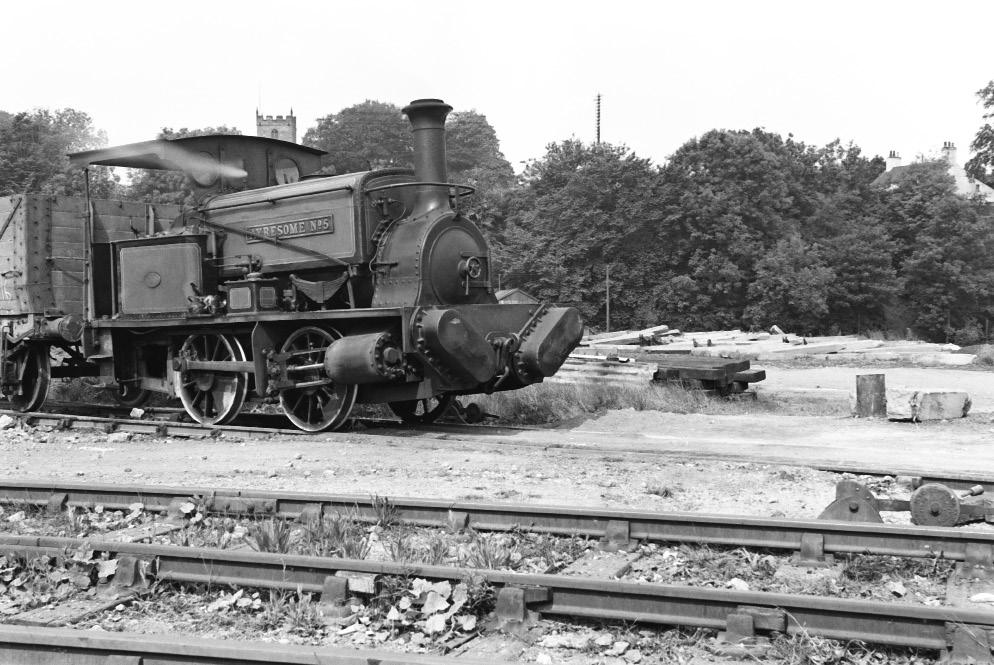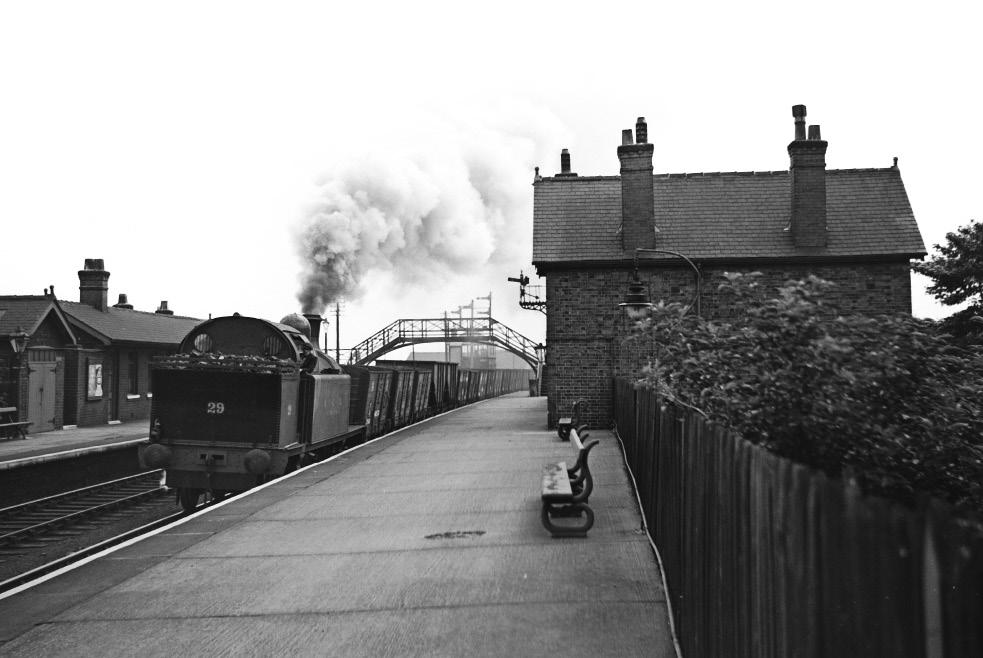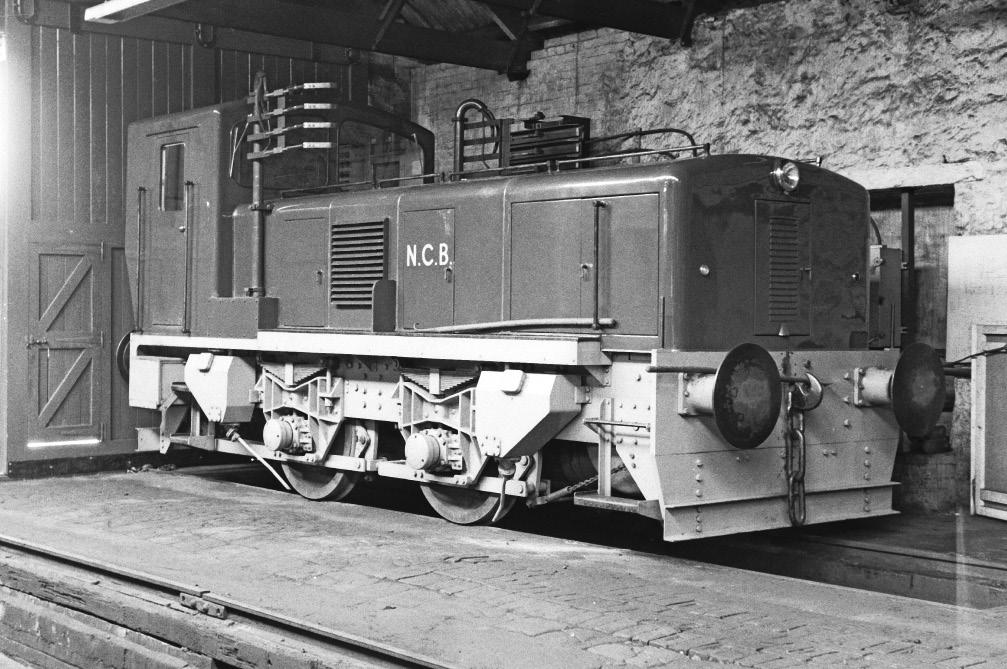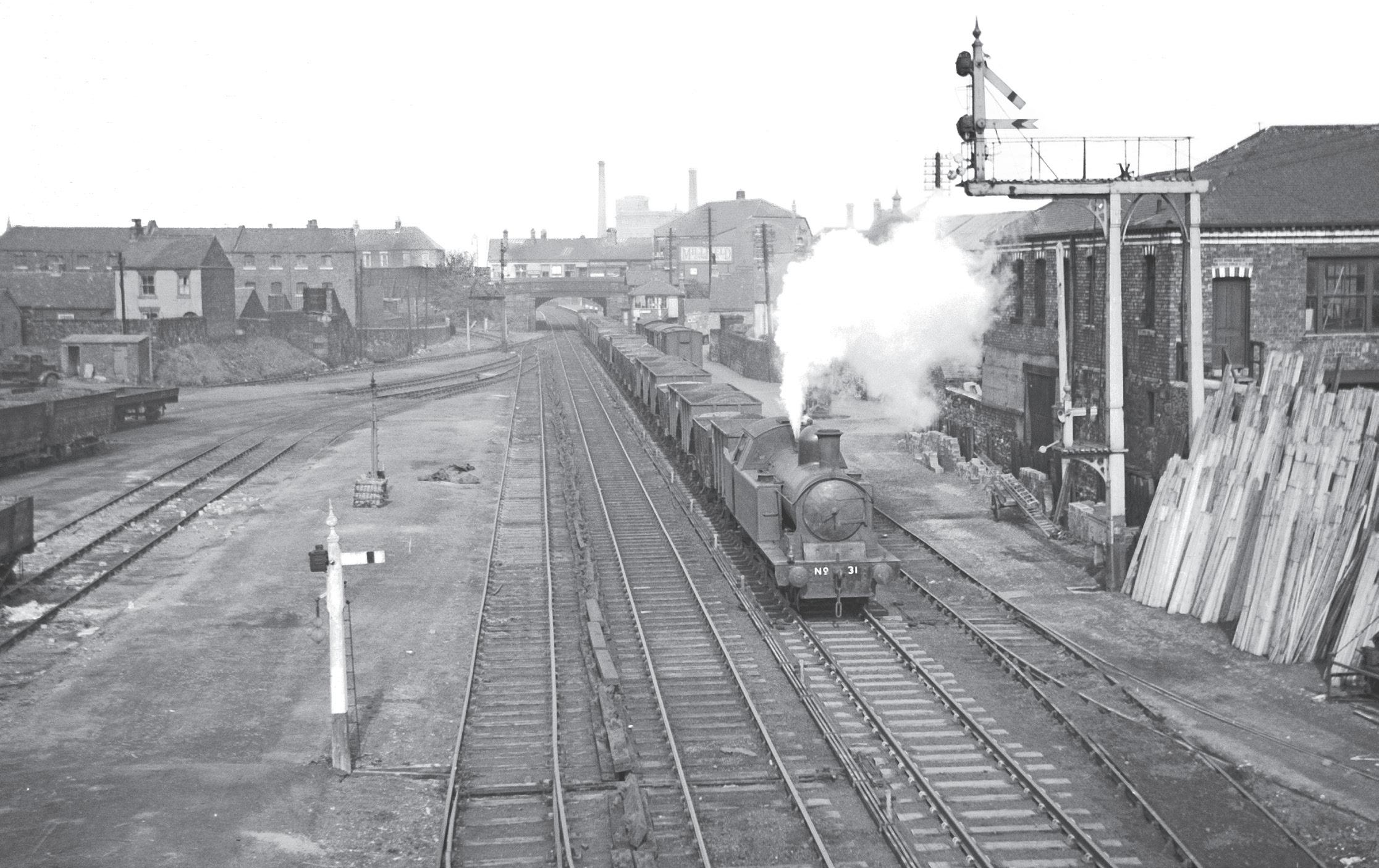





The village of Aycliffe is situated between the Stockton & Darlington line to Shildon and the East Coast Main Line north of Darlington. The quarry was beside the main line and produced Magnesian limestone; and like most such sites it used rail haulage. One of its locomotives was 0-4-0ST Ayresome No.5 , photographed on 23rd June 1951. Note the unusual angled dumb buffers, designed to cope with traditional 2½ ton chaldron wagons as well as contemporary rolling stock. The locomotive was built by Manning Wardle in 1881 as works no.777. The tower of the parish church of St Andrew’s is in the background.

An early example of the classic Lambton 0-6-2T, no.29 came from Kitson’s of Leeds in 1904, works no.4263. The location is Pallion station, west of Sunderland on the south bank of the Wear. This illustrates the practice of NCB locomotives having running powers over BR lines. The date was 4th August 1956, eight years before passenger services ended on the Sunderland to Durham route. Pallion is once again on the passenger map, for in 2002 the Tyne & Wear Metro opened a new station just to the north, on its extension to South Hylton. No.29, meanwhile, is in working order and is a regular performer at the North Yorkshire Moors Railway.

The curiously-named Morrison Busty pit on the southern edge of Annfield Plain was a producer of coking coal, which was mined here from 1927 to 1973. In this 23rd August 1968 view, NCB no.79, an 0-6-0ST built by Robert Stephenson Hawthorn, works no.7545 of 1949 was out of use, despite its relative newness and its diesel-style wasp stripes. Its replacement was almost sixty years older, in the shape of Twizell, an 1891 product of Robert Stephenson & Co, Newcastle, works no.2730. Built for James Joicey & Co′s Beamish Railway, Twizell is preserved in working order at the Tanfield Railway.

This magnificent, undated photograph of Engine Shed Junction at Percy Main was taken looking south from the bridge carrying Howdon Road across the railway. Hartley Main Collieries’ no.3 was a double-framed 0-6-0, formerly North Eastern Railway no.658. It was a Fletcher Class 93, built in 1867 by Robert Stephenson & Co as works No.1747. The NER sold it to Seaton Delaval Colliery in 1903, then in 1929 it was absorbed by Hartley Main Collieries. In 1959, at the age of 92 years it was scrapped by the NCB. It is hauling a rake of empty wooden hoppers up the gradient from Northumberland Dock.

NCB 0-6-0ST no.25 is yet another example of an ex-Barry Railway Class F. Unlike no.7 seen at Backworth, no.25 has not received the Swindon treatment and retains its original saddle tank and boiler mountings. Originally no.132, it was built by North British in Glasgow as works no.16633 of 1905 and became GWR no.747. It was sold to Hartley Main Collieries in 1933. On 13th June 1957 it was photographed at East Cramlington, where we can clearly see the pit head gear and associated buildings.

NCB 0-6-0ST no.42 was Robert Stephenson Hawthorn works no.7766 of 1953. It was almost new when photographed on 4th September of that year, with safety valve lifted. Another of the ubiquitous RSH outside-cylinder saddle tanks, they were designed as an alternative to the Hunslet Austerity type and were nicknamed ‘Stubby Hawthorns’, The location is the East Cramlington washer, where the buckets of the aerial ropeway can be seen above the huge pit heap. The Lancashire boiler water tank appears to be leaning somewhat, and a pair of ancient wooden semaphore signals complete the scene.
As well as the Austerity saddle tanks that bolstered the war effort, Britain’s railways benefited from an influx of American S100 Class 0-6-0T locomotives from the United States Army Transportation Corps. Some went to the Southern Railway for shunting Southampton Docks, but what is less well known is that from 1943, several reported for duty in the Northumberland coalfield, including some at Hartley Main Collieries. One of them became NCB no.35, built by Davenport in Iowa in 1943, works no.2509. It arrived here in May 1947 but by 3rd May 1953, when photographed, it had reached the end of its short life and was soon scrapped.

Another former main line engine bought by Hartley Main Collieries was no.20, seen at Seaton Delaval soon after the creation of the NCB. Originally a Glasgow & South Western Railway Class 160 0-6-0, no.171 was designed by J Manson and built at Kilmarnock in 1898. It was withdrawn as LM&SR no.17196 in 1926. By the time this photo was taken it had acquired a tender cab and a NER chimney from a Class J21. Hartley pit witnessed one of Britain’s worst ever mining disasters. 204 men and boys suffocated underground in 1862 when the beam engine broke and blocked the only shaft. A poignant memorial stands in Earsdon churchyard.


This unusual experimental gyro-electric locomotive was built by Sentinel in 1957 as works no.9614, with twin “gyro units” from Maschinenfabrik Oerlikon of Switzerland. These were 3 ton horizontal flywheels which drove electric motors. When stationary, it was ‘charged’ from lineside posts via a contact arm extended pneumatically by the driver. When the gyro wheels reached the required speed, the driver retracted the arm, and it could work for about 30 minutes before recharging. It was built for the NCB at Seaton Delaval to research gyroscopic storage as a method for a fireless and fume-free underground locomotive. It was successful but in 1965 it was converted to diesel-hydraulic power.
ISBN 978-1-913893-47-7

£13.50

Embark on a captivating visual journey through the industrial heartlands of Northeast England with the remarkable collection of Neville Stead. From the smoky landscapes of Northumberland, the bustling quaysides of Tyneside, County Durham, and as far as Teesside, this volume presents an evocative exploration of Britain’s railways at their zenith.
Through meticulously curated images spanning from the 1930s to the mid-1980s, witness the enduring legacy of traditional industries etched into the rugged terrain. Each photograph unveils a rich tapestry of industrial heritage, from gaunt colliery headstocks to bustling shipyards.